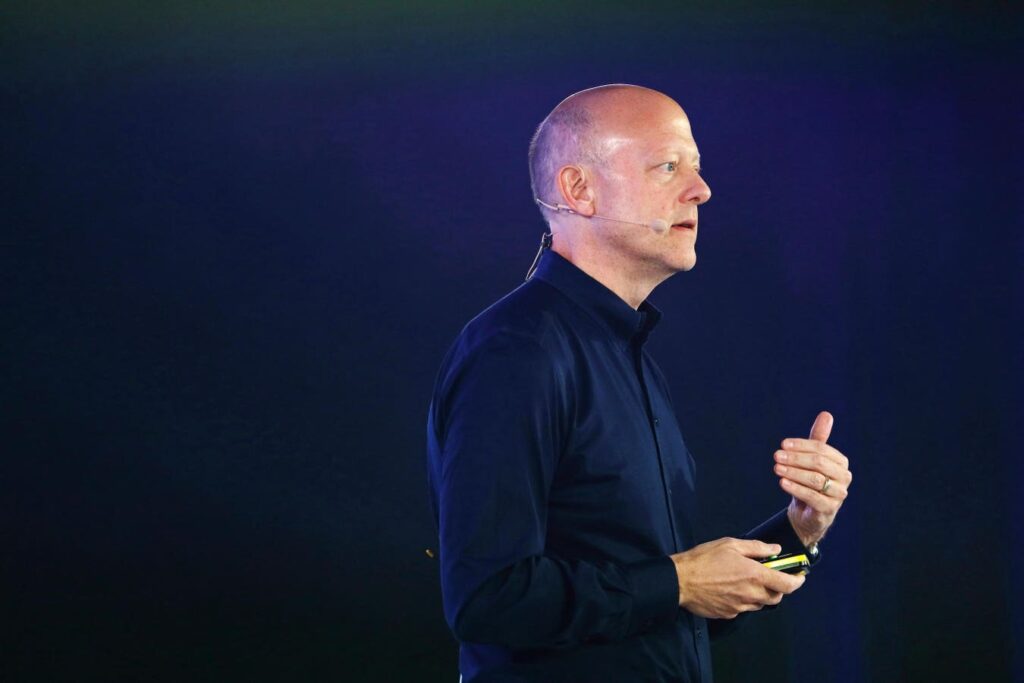Circle, the company behind the $61 billion stablecoin USDC, made a roaring debut on the New York Stock Exchange Thursday, becoming the first stablecoin issuer to go public and making CEO and cofounder Jeremy Allaire a billionaire. Shares surged as much as 235% after Circle and some of its shareholders raised nearly $1.1 billion in an initial public offering that was upsized twice amid heavy investor demand.
The stock opened at $69, more than double its IPO price of $31, and climbed as high as $103.75. The offering included 34 million shares from Circle and other shareholders including Allaire, up from the 32 million shares announced earlier this week and 24 million initially. The IPO was priced well above its initial $24–$26 range and even its revised $27–$28.
Based on Circle’s 2 P.M. stock price of $86, Forbes figures Allaire has a net worth of at least $1.7 billion. A representative for Circle has not yet responded to a request for comment about Allaire’s net worth.
BlackRock, already an investor, and Cathie Wood’s ARK Investment Management, were among the reported buyers. The deal was led by JPMorgan Chase, Citigroup and Goldman Sachs, alongside 12 other underwriters.
“We’re thrilled with the demand,” Circle CFO Jeremy Fox-Geen told Forbes. “We saw a wide range of investor interest from traditional mutual fund complexes through to high-conviction, long-oriented pools of private capital within the broader hedge fund space, as well as various sovereign wealth funds. I think it says that the investor community is understanding that we are on the precipice of what we here call the new internet financial system.”
Circle’s listing arguably marks crypto’s most significant public market event since Coinbase’s 2021 IPO. The New York-based firm is a pure-play stablecoin business: USDC is the world’s second-largest stablecoin, making up 27% of the market behind Tether’s 67%. While originally used for crypto trading, stablecoins are increasingly drawing attention from financial giants and tech firms—among them Fidelity Investments, Bank of America and Meta—as rails for payments and cross-border transactions.
Since launching USDC in 2018, Circle has processed over $25 trillion in transaction volume, nearly $6 trillion of which occurred in just the first quarter of 2025. The company has long positioned itself as the regulated, transparent alternative to Tether, publishing detailed audited reserve disclosures.
In 2024, Circle reported $1.68 billion in revenue and $156 million in net income, up from $1.45 billion in revenue and $268 million in profit the year prior. But its business remains highly concentrated: More than 99% of revenue came from interest income on the cash and Treasurys backing USDC. In its S-1 filing, Circle warned that a 1% drop in interest rates could wipe out $441 million of that revenue.
Fox-Geen says diversification is underway: “We have a set of product investments which we have started monetizing recently, which range from subscription and services revenues, such as our blockchain network partnerships, through to transaction revenues, where we monetize certain of the flows across the network where users of the network wish to use a value added service which they’re willing to pay for.” Those initiatives generated $20.7 million in Q1. Modest for now, but growing quickly, he noted.
The company’s distribution model, however, remains costly. In 2024, Circle paid over $1 billion in distribution fees—$900 million of it to Coinbase. Tether, by contrast, doesn’t pay distributors to maintain dominance.
The road to public markets was not a straight one. Circle scrapped a $9 billion SPAC merger in late 2022. In 2023, the company was hit by the collapse of Silicon Valley Bank, where it had deposited a portion of its reserves. Though Circle ultimately recovered the funds, USDC’s market capitalization took months to rebound.
In April, Circle reportedly fielded acquisition offers from both Coinbase and Ripple valuing the company at around $5 billion. It opted instead to go public, filing confidentially for an IPO early this year. It’s likely a bet that regulatory clarity will finally be arriving, and with it, a premium for compliance.
“Becoming public has always been part of our strategy,” said Fox-Geen. “This is a multi decade transformation of the plumbing of the financial services industry, but that understates just how profound a technology upgrade this really is.”
Read the full article here


